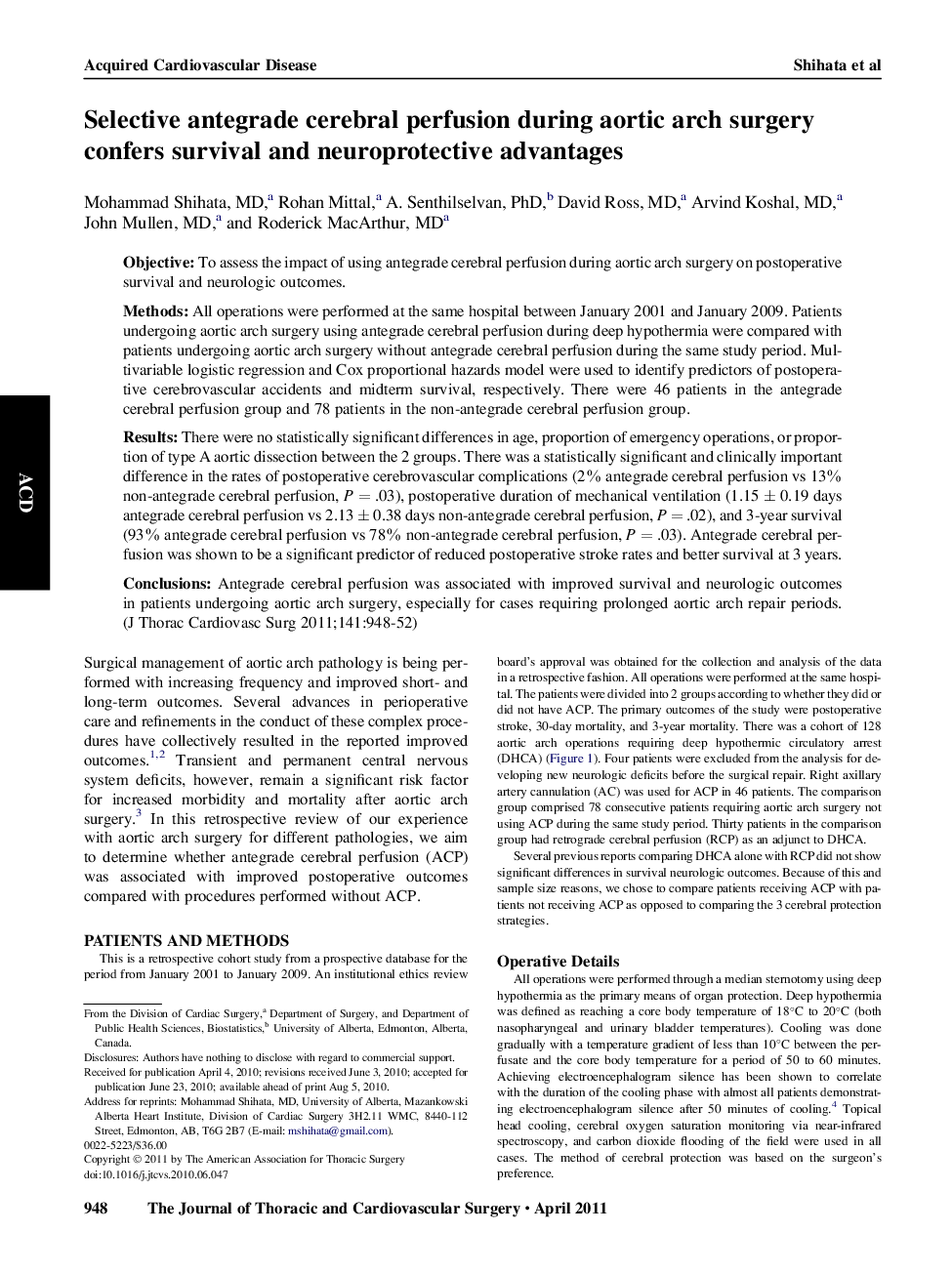| Article ID | Journal | Published Year | Pages | File Type |
|---|---|---|---|---|
| 2982660 | The Journal of Thoracic and Cardiovascular Surgery | 2011 | 5 Pages |
ObjectiveTo assess the impact of using antegrade cerebral perfusion during aortic arch surgery on postoperative survival and neurologic outcomes.MethodsAll operations were performed at the same hospital between January 2001 and January 2009. Patients undergoing aortic arch surgery using antegrade cerebral perfusion during deep hypothermia were compared with patients undergoing aortic arch surgery without antegrade cerebral perfusion during the same study period. Multivariable logistic regression and Cox proportional hazards model were used to identify predictors of postoperative cerebrovascular accidents and midterm survival, respectively. There were 46 patients in the antegrade cerebral perfusion group and 78 patients in the non-antegrade cerebral perfusion group.ResultsThere were no statistically significant differences in age, proportion of emergency operations, or proportion of type A aortic dissection between the 2 groups. There was a statistically significant and clinically important difference in the rates of postoperative cerebrovascular complications (2% antegrade cerebral perfusion vs 13% non-antegrade cerebral perfusion, P = .03), postoperative duration of mechanical ventilation (1.15 ± 0.19 days antegrade cerebral perfusion vs 2.13 ± 0.38 days non-antegrade cerebral perfusion, P = .02), and 3-year survival (93% antegrade cerebral perfusion vs 78% non-antegrade cerebral perfusion, P = .03). Antegrade cerebral perfusion was shown to be a significant predictor of reduced postoperative stroke rates and better survival at 3 years.ConclusionsAntegrade cerebral perfusion was associated with improved survival and neurologic outcomes in patients undergoing aortic arch surgery, especially for cases requiring prolonged aortic arch repair periods.
